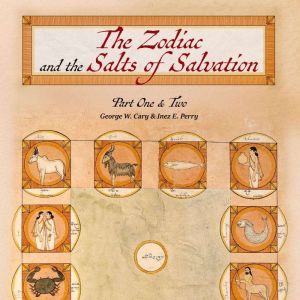

The Zodiac and the Salts of Salvation
Parts One and Two
Author: George W. Carey, Inez Perry
Narrator: Henry Schrader
Unabridged: 12 hr 54 min
Format: Digital Audiobook Download
Publisher: Mockingbird Press
Published: 08/18/2021
Categories: Nonfiction, Body, Mind, & Spirit
Synopsis
Dr. Carey was a homeopath who believed that cell-salts — naturally occurring minerals — were necessary to supplement deficiencies in the human body, thus curing disease and ailments.
Dr. Carey’s unique contribution to the field of biochemistry was to connect each of the twelve cell-salts with a particular sign of the Zodiac. In his pamphlet The Relation of Mineral Salts to the Body and to the Signs of the Zodiac, Carey describes the characteristics of each Zodiac sign, their Biblical connection through a corresponding son of Jacob and disciple of Christ, and the cell salt in which they are often deficient.
While Dr. Carey’s work on mineral salts and the Zodiac is foundational, it is also largely theoretical. After Dr. Carey’s death in 1924, collaborator Inez Eudora Perry republished The Relation of Mineral Salts to the Body and to the Signs of the Zodiac, and supplemented it with an additional work of her own that expounded on Dr. Carey’s ideas. The resulting work was published in 1932 as The Zodiac and the Salts of Salvation.
Perry’s contribution is titled An Esoteric Analysis and Synthesis of the Zodiacal Signs and their Physiochemical Allocations. Part two is much longer than part one, with thorough explanations of both the symbolism and practical uses of each cell-salt. She also explores more thoroughly the connection of the Zodiac to the body of man — comparing the macrocosm of the universe to the microcosm of the human body.

